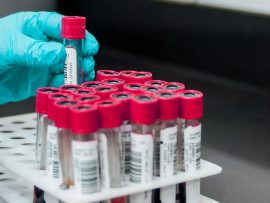Abstract Despite decades of technological advancements in blood-contacting medical devices, complications related to shear flow-induced blood trauma are still frequently observed in clinic. Blood trauma includes , , and degradation of High..
Read MoreAbstract Background: Clot formation on foreign surfaces of extracorporeal membrane oxygenation systems is a frequent event. Herein, we show an approach that mimics the enzymatic process of endogenous nitric oxide..
Read MoreAbstract Extracorporeal membrane oxygenation (ECMO) is a therapy used in severe cardiopulmonary failure. Blood is pumped through an artificial circuit exposing it to nonphysiologic conditions, which promote platelet activation and..
Read MoreAbstract Objectives: To investigate platelet pathophysiology associated with pediatric extracorporeal membrane oxygenation (ECMO). Design: Prospective observational study of neonatal and pediatric ECMO patients from September 1, 2016, to December 31,..
Read MoreAbstract Objective. Recent studies have shown that the red cell distribution width- (RDW-) to-platelet (PLT) count ratio (i.e., RPR) and the mean platelet volume (MPV)/PLT ratio (i.e. MPR) are more..
Read MoreAbstract Extracorporeal membrane oxygenation (ECMO) is a therapy used in severe cardiopulmonary failure. Blood is pumped through an artificial circuit exposing it to nonphysiologic conditions, which promote platelet activation and..
Read MoreAbstract Despite increasing improvement in extracorporeal membrane oxygenation (ECMO) technology and knowledge, thrombocytopenia and impaired platelet function are usual findings in ECMO patients and the underlying mechanisms are only partially..
Read MorePlatelet, Red Cell, and Endothelial Activation and Injury During Extracorporeal Membrane Oxygenation
Abstract Extracorporeal membrane oxygenation (ECMO) can be lifesaving but suffers from high rates of bleeding and repeated transfusions. Current monitoring of blood cell damage during ECMO is limited to platelet..
Read MoreAbstract Purpose Postoperative cognitive dysfunction (POCD) occurs frequently after cardiac surgery. The pathophysiology of POCD remains elusive, but previous work showed that intravenous lidocaine may be protective against POCD, possibly..
Read MoreAbstract During cardiopulmonary bypass (CPB), platelet activation and dysfunction are associated with adverse outcomes. Remote ischemic preconditioning (RIPC) has been shown to attenuate platelet activation. We evaluated the effects of..
Read More








